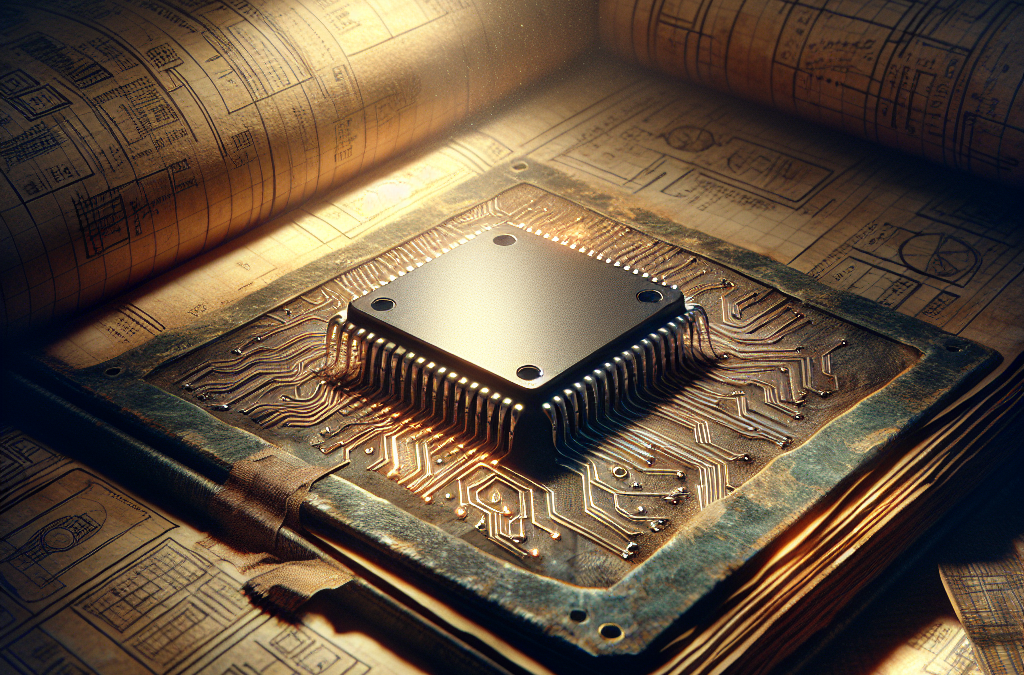
The Lost Chip That Revolutionized Computing
Uncovering the Mystery of the Lost Chip
The story of computing is filled with breakthroughs, but hidden among them lies the tale of a lost chip that revolutionized computing in unseen ways. This lost chip was not just a hardware component but a pioneering innovation that shaped future technologies, despite nearly vanishing from memory. Tracing its origins, impact, and the circumstances of its obscurity offers an intriguing glimpse into how critical components can influence entire industries long after they disappear from the spotlight.
The Genesis of the Lost Chip
The lost chip originated in an era when semiconductor technology was evolving rapidly. Engineers sought to miniaturize computing power into integrated circuits, allowing for exponential growth in processing capability. This chip was developed amid fierce competition and innovation, representing a leap in both architecture and performance.
Technical Breakthroughs Embedded in the Chip
– Introduced a novel transistor design that improved speed and heat dissipation.
– Integrated multi-functional units within a single chip, reducing system complexity.
– Enabled efficient power management, setting the stage for portable devices.
These features made the lost chip a trailblazer, laying groundwork that many modern processors still build upon. Its architecture influenced microprocessor development and embedded system design significantly, even if the original design wasn’t widely commercialized.
Who Designed the Lost Chip?
A team of visionary engineers from a then-little-known tech company crafted the lost chip. Though overshadowed by larger players, their work demonstrated ingenuity by combining theoretical insights with practical implementation techniques that challenged existing design paradigms.
The Disappearance: How a Revolutionary Chip Was Lost
Despite its merits, the lost chip vanished from mainstream computing history, primarily due to a combination of corporate missteps and market timing.
Market and Corporate Challenges
– Intense competition from industry giants blocked widespread adoption.
– Insufficient funding prevented scalability and mass production.
– Patent disputes and licensing conflicts slowed commercial rollout.
Additionally, the timing of the launch coincided with major shifts towards standardized chip architectures, which marginalized more experimental designs. The lost chip, therefore, became a footnote rather than a headline.
The Physical Loss and Archival Oversights
The original chip prototypes and documentation were misplaced during a corporate transition, leading to a loss of vital blueprints. This physical loss contributed to the technological amnesia surrounding the chip, making it difficult for future engineers to access or revive the original concepts.
The Lasting Impact of the Lost Chip on Computing
Though overshadowed, the lost chip’s design principles subtly permeated future developments, influencing how modern processors evolved.
Innovations Inspired by the Lost Chip
– Modular chip design allowing flexible configurations.
– Early multi-core processor concepts.
– Enhanced integration of processing and memory, foreshadowing system-on-chip (SoC) architectures.
Industry veterans acknowledge that many techniques initially explored with the lost chip matured into mainstream use decades later, proving that ideas ahead of their time can resurface deeply transformed.
Lessons Learned from the Lost Chip Saga
– Innovation requires not only technical excellence but also strategic business planning.
– Preservation of design and documentation is crucial for historical and developmental continuity.
– The tech community benefits from revisiting forgotten advancements to inspire new breakthroughs.
Unearthing the Lost Chip in Modern Times
Recently, with renewed interest in retro computing and history, the lost chip has sparked curiosity among researchers and hobbyists.
Efforts to Rediscover and Reconstruct
– Archival research uncovered partial blueprints and design notes in university libraries.
– Enthusiast groups replicated chip functions using modern FPGA technology.
– Academic papers analyzed the chip’s architecture for performance insights.
Such efforts help bridge a gap between historical appreciation and practical usability, affirming the lost chip’s relevance to today’s computing challenges.
Where to Learn More About the Lost Chip
Many resources online detail the discovery and exploration of this mysterious chip. Visiting dedicated tech history archives and forums reveals firsthand accounts and technical discussions shedding light on the lost chip’s influence.
Example resource: The Computer History Museum’s collections provide extensive archives related to early chip designs and semiconductor innovations. [https://www.computerhistory.org/](https://www.computerhistory.org/)
Applying the Spirit of the Lost Chip Today
The narrative of the lost chip encourages modern engineers and entrepreneurs to embrace innovation courageously while minding practical constraints.
Strategies for Innovators Inspired by the Lost Chip
– Balance groundbreaking design with market readiness.
– Maintain thorough documentation and intellectual property protection.
– Foster open collaboration to prevent innovations from disappearing into obscurity.
– Consider scalability and timing when introducing disruptive technologies.
Adopting these strategies can prevent modern “lost chips” from fading away before they achieve their full potential.
Technological Heritage and Future Opportunities
Exploring the legacy of forgotten innovations like the lost chip enriches the cultural and technical heritage of computing. It offers opportunities to revisit and refine ideas once ahead of their time, applying them to emerging fields like quantum computing, edge AI, and IoT devices.
Reflecting on the Lost Chip’s Journey and Your Next Step
The tale of the lost chip is a compelling chapter in tech history, illustrating how innovation, timing, and business strategy intertwine. While this chip may have been physically lost, its impact echoes across decades of computing progress.
If you are passionate about exploring or reviving historical tech innovations, now is the time to delve deeper into these hidden gems. Join communities fascinated by tech history or start projects inspired by the lost chip’s design ethos. For personalized guidance or collaboration inquiries, visit khmuhtadin.com and connect with experts dedicated to transforming past breakthroughs into tomorrow’s advancements.
